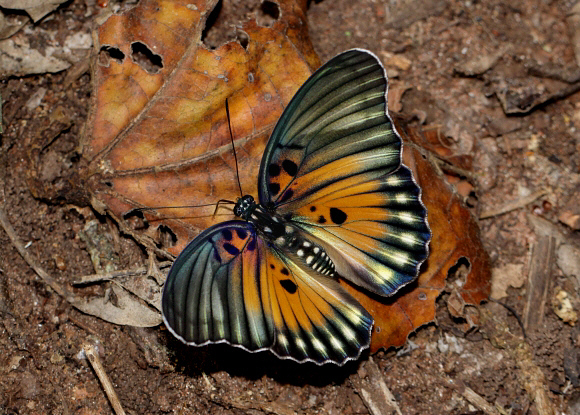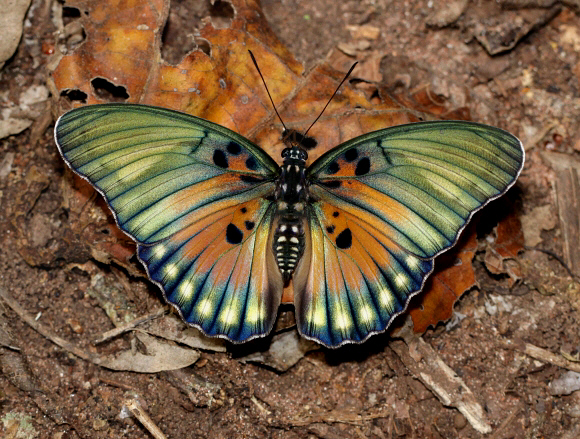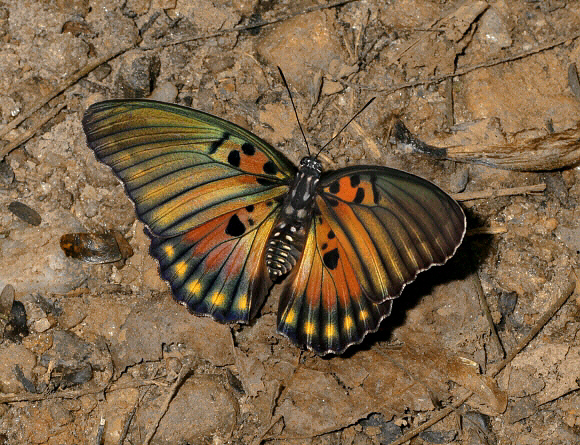
Introduction
The genus Euphaedra comprises of a yet to be discerned number of large and very beautiful forest-dwelling butterflies, all found on the African continent. In 1997 Hecq revised the genus and at that time listed a total of 180 species. This figure is challenged by other workers who believe that many of these are merely local forms or subspecies. However in 2012 Hecq produced a further revision of the eleus species-group, describing an additional 12 species, bringing the total in the genus to 192. When working in the field it is immediately obvious that there are a huge number of specimens that are noticeably dissimilar to any of the insects illustrated by Hecq, but it is unclear whether these are examples of intra-specific variation, distinct taxa or hybrids.
All Euphaedra species share a common wing shape. Most have a similar pattern on the upperside – typically the basal areas of the wings ( particularly the hindwings ) have large suffused patches of metallic blue, green, orange or red. Most species also have a cream or orange sub-apical bar. The undersides are usually some shade of yellow or green, marked with black spots and streaks that vary in intensity and configuration according to taxon and locality. Many species also have beautiful pink patches or streaks on the underside hindwings.
The wing pattern of edwardsi is unique – the only other species with which it could be confused is ferruginea which is endemic to eastern Nigeria and Cameroon, and lacks the black spots in the discal cells of the hindwings.
Euphaedra edwardsi is distributed from Sierra Leone to Uganda and eastern Congo.

Habitats
This species is a forest butterfly found at altitudes between sea level and about 1200m. It seems to prefer the drier and more open secondary forests, and can also be found in arboreta, botanical gardens and similar habitats.
Lifecycle
The caterpillars are green, and adorned with an array of multi-branched lateral spines which are appressed to the leaf on which they are resting. They feed on Lecaniodiscus ( Sapindaceae ).
Adult behaviour
Both sexes are strongly attracted to clusters of fallen fruits, particularly Ficus, and patrol back and forth along forest paths in search of them. It is not unusual for groups of up to 30 Euphaedra and Bebearia butterflies of various species to aggregate at such feeding sites.
Euphaedra edwardsi is usually seen singly or in two’s and three’s. The butterflies patrol back and forth along short stretches of forest path or logging road, periodically settling to bask.

